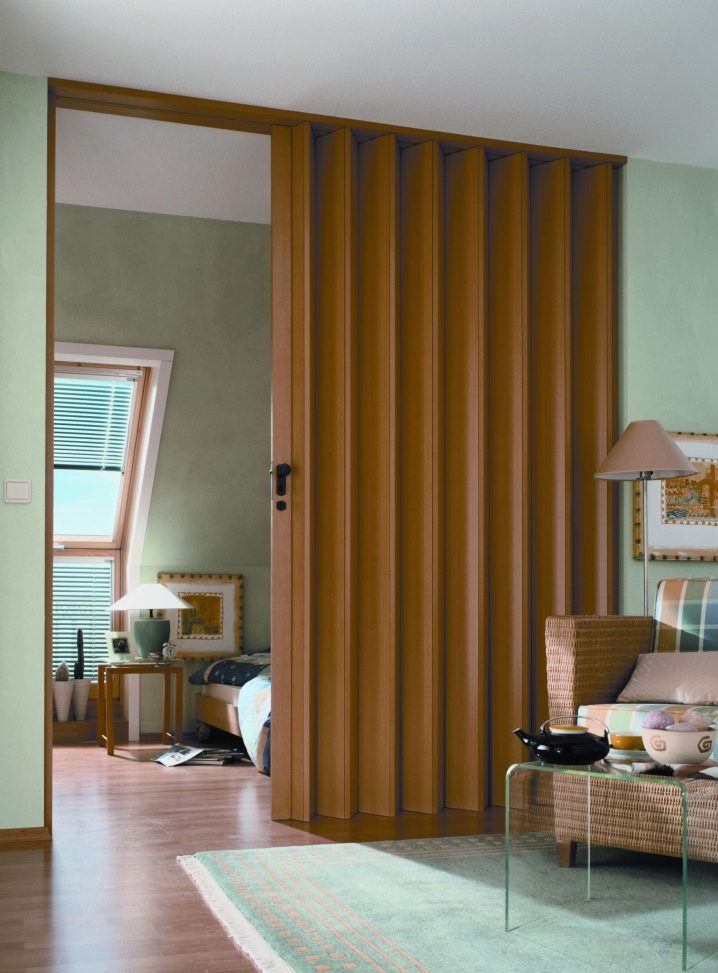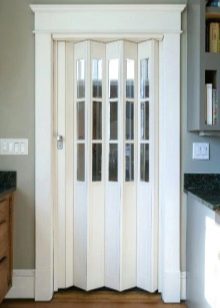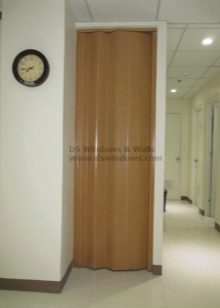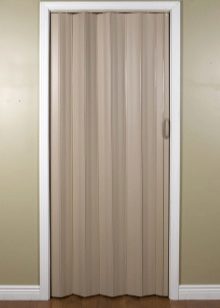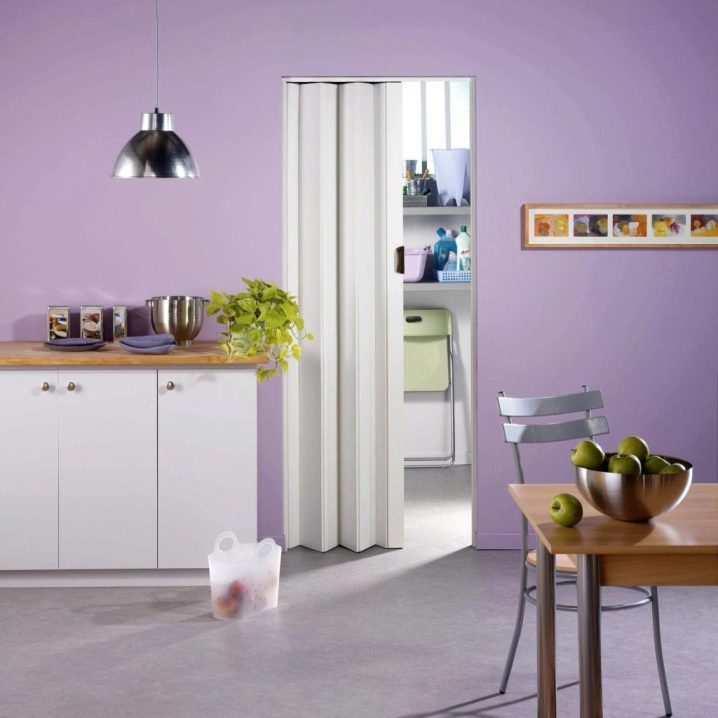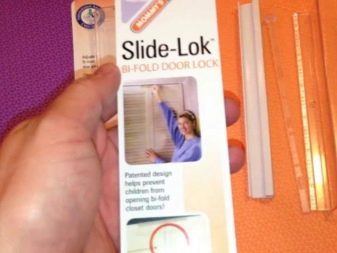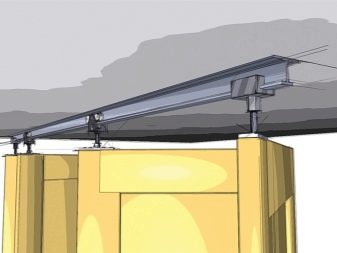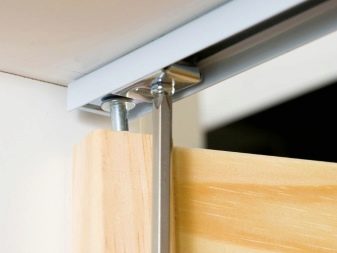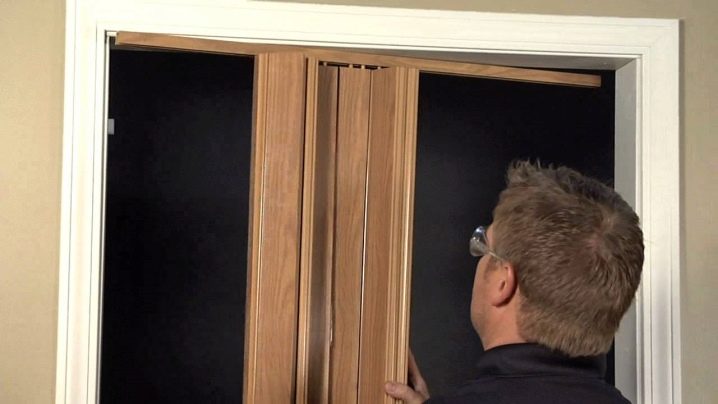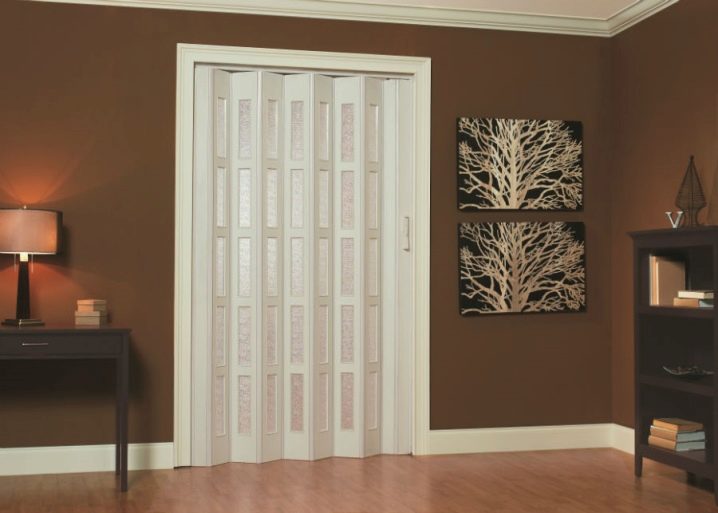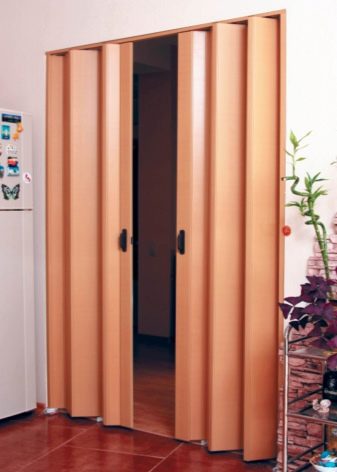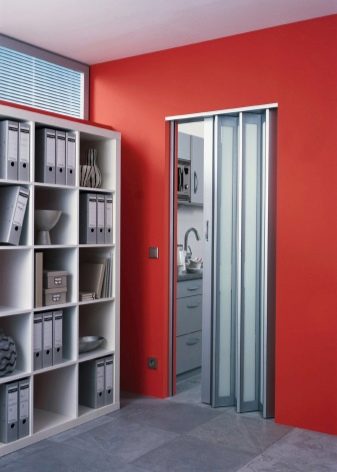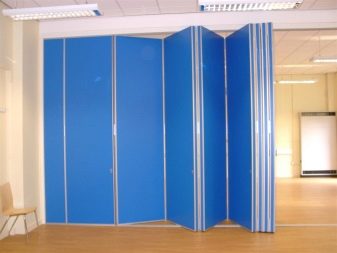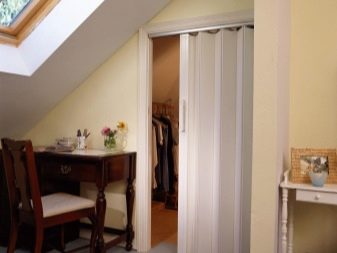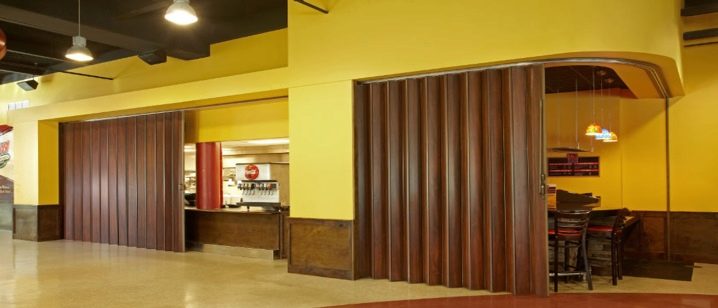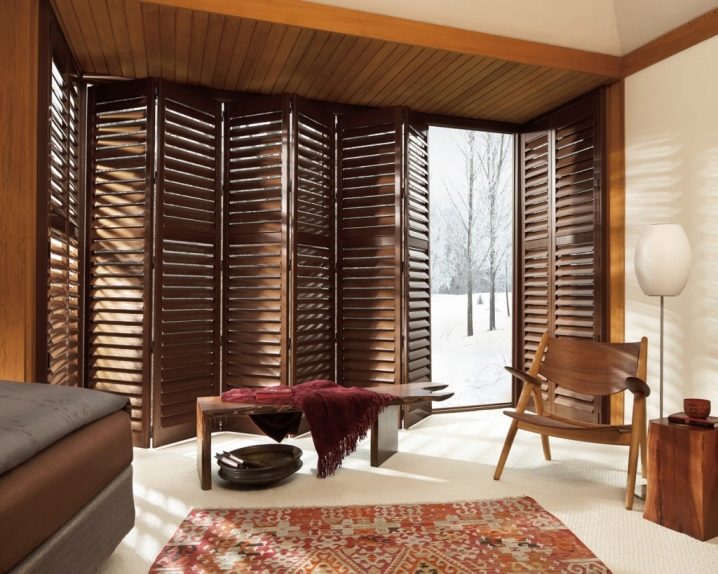Installation of door-accordion
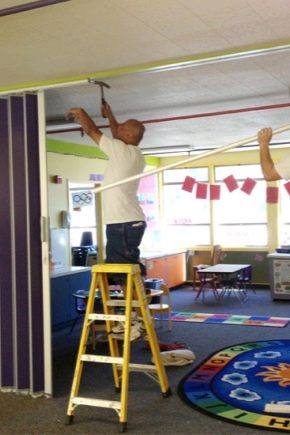
The demand for accordion-type doors is understandable: they take up very little space and can be used even in a small room. And in order to reveal all their functionality and aesthetic potential, it is not necessary to invite professional installers. Such doors can be established and the hands.
Benefits
Installation of these doors is quite simple. The canvas and other elements are mounted without any difficulties, if you know how to handle the tool at least a little. To use such constructions is justified not only because they save space. It is equally important that:
- All restrictions on the decoration of the walls are no longer possible, because it will be possible to use even those materials that an ordinary door will scratch or puncture with its handle;
- Opening the door will be much quieter and without squeaking;
- Even children are safe - they won't pinch their fingers;
- Distortion, sagging and other problems typical for a hinged door, seasonal swelling from moisture are excluded.
Training
The installation of accordion doors varies slightly depending on the material from which they are made. Plastic designs allow for mounting more “liberties”, errors are easily corrected and during the installation process a partner is not even required. Wooden doors are more stable and stronger, but you have to carefully check the levels and their markup. It will be harder to fix them, because such door systems are heavier than PVC.
Included from the manufacturer should go all the parts necessary for work, but the materials for the expansion of the door are not always supplied. Fastening almost always implies equipping the opening with casing and other elements, and they will have to be bought additionally.
As for the tools, you will need to work:
- Drill;
- Perforator (both tools, since they are needed for different tasks);
- Construction level;
- Meter;
- Plumb;
- Building corner;
- Saw on wood;
- Stouslo;
- Foam assembly.
Work with the opening
It is easiest to install an "accordion" with your own hands, if you do not touch the opening at all, but restrict yourself to the width already available. But this is not always possible. Sometimes you will not have another way to increase the usable area. Then remove the old door frame and knock down the plaster to the concrete base (or expose the other base of the wall). Before installing the box, you will have to measure both the doorway and the door itself in order to understand whether it is necessary to reduce the width of the hole or increase it.
When the expansion (contraction) of the opening is completed, a box is made of a pre-prepared set of dobor, it is inserted into the opening and securely fixed. In the upper part use screws and a pair of anchors, and the sidewalls are fixed with three anchors on both sides. If there are even the smallest gaps between the walls and the dobers, they need to be covered with mounting foam.
The next step, which every step-by-step instruction speaks of, is to fasten the guides.We measure the necessary values, best of all several times for greater accuracy, then we cut off the material with a mousse. Next, prepare the holes for self-tapping screws of 3 mm caliber (they will be screwed into the upper guideline 60-70 millimeters, and 200 mm apart from the side ones). If you prefer clips, then at the top the distance remains unchanged, and on the sides there are enough five connections evenly distributed along the length.
The installation scheme of the canvas itself implies an exact, meticulous cutting of the strips from which the door is made. At the same time, it is taken into account how the rollers and the centimeter gap under the door unit will be placed. At this stage, the slightest deviations from the instructions developed by the manufacturer are absolutely unacceptable, even the most experienced installers are not entitled to them. Plastic canvas is often assembled with the help of grooves or additional gaskets, and wood and MDF structures - along long axes. Then rollers are installed (approach this case very carefully and carefully!), And after them the turn of accessories comes.
It is not recommended to use accessories that are not included in the package.Assembled door is inserted into the guides and folds up for placement in the central part. It is important to properly snap the guides on the clips or to tighten the screws at a certain distance from each other.
It remains to work with the side profiles and attach the blind parts of the doors to the profile. Making sure that the canvas "walks" normally, you can put the trim, cutting off the necessary areas and securing them along the entire length of the opening.
Important: the door frames of the sliding doors should be cut at an angle of 45 degrees, and they should be fixed with liquid or special furniture nails.
Where to mount?
Collect the interior "book" is not more difficult than installed at the entrance to the home, moreover, it opens up a wide scope for experiments. Any home master will happily grasp the opportunity to test his professionalism and gain additional experience.
Sliding structures perfectly manifest themselves in:
- Bedrooms;
- Living rooms;
- Office cabinets;
- Kitchens.
For private houses and city apartments, single-door harmonicas are most often used, but in offices and public buildings, a pair of casements are used.If desired, it is not difficult at the right time to make the door wider or narrow it by changing the number of panels.
At the entrance to the kitchen and bathroom, it is desirable to use glass or plastic doors (unlike wood, they are not deformed by the action of steam and water). For all other rooms there are no restrictions on the material.
Note that increasingly, these doors replace the shower curtain curtain.
Before starting work, we recommend to make sure that all the necessary components in the kit are:
- Sash panel;
- Upper guide;
- A pair of runner carriages;
- Connecting loops;
- The key to adjust.
If the opening is of a standard width, that is, it does not exceed a meter, there is no need for a lower rail. In those cases where the doorway is already a guide, it will have to cut off the required part with a saw on metal. For the flaps opening from right to left, the latch is placed on the right; if they open from left to right, it is mounted on the left side. The faceplate axis itself should enter the latch, and the slider should be placed in the rail. Mark the location of the metal axes and drill holes for them (so that the depth is less than the length of the axis, which must protrude at a distance specified in the instructions). The lower axis abut the receiving plate.
Important: do not confuse the left and right panels in any case!
The hinges are neatly placed on the sash, marking the required distance with a pencil or marker. Be sure to put three loops in the interval of the next flaps. For all their horizontal position, the loops should be made the same. At the slightest displacement there will be distortions, and the panels will crack. To be able to install the handle, a groove is drilled in the extreme panel (preferably next to the loop connection).
The billet of the connected sash is hung on the fasteners, put them up, lifting and turning the axes into the thrust plates. Next, the axis of the carriage with the help of the adjusting key is connected with the plate placed parallel to the extreme sash. Clamps and stoppers are always metal, they are made of aluminum or steel. Guides try to place only on top for the simple reason that it eliminates the need to make a threshold. Remember: when cutting guides, remove the part where the holes are located.
Plastic or wooden door-accordion sometimes have to be installed in openings wider than one meter.In this case, the number of upper runners is necessarily increased and the lower rail guide is mounted. The fastening of the door and the retaining elements in it is exactly the same as at the top. If leather or fabric is used in the main structure, moderately rigid fabric inserts are used to connect fragments instead of loops.
The door "accordion" is quite a reasonable and technically perfect solution. Installation of such doors is available even for a layperson, at least in the smallest degree who knows how to handle a plumb and a drill. You only need to strictly comply with key requirements, and you will be guaranteed success!
How to mount the door-accordion, see the following video.
